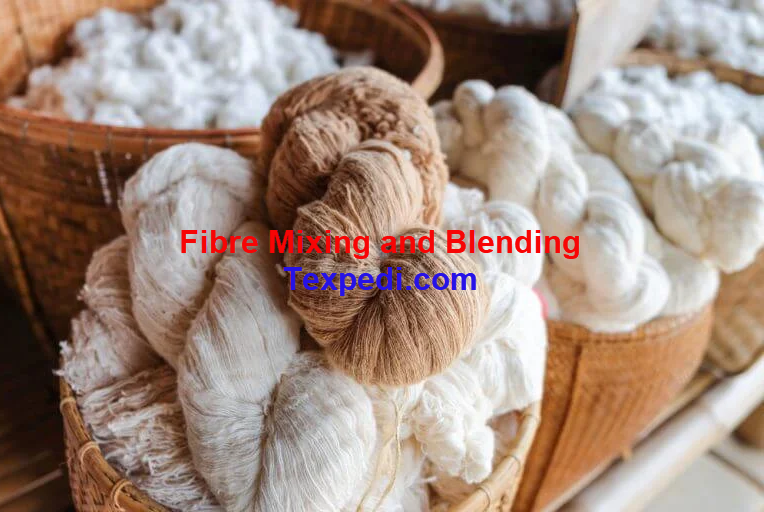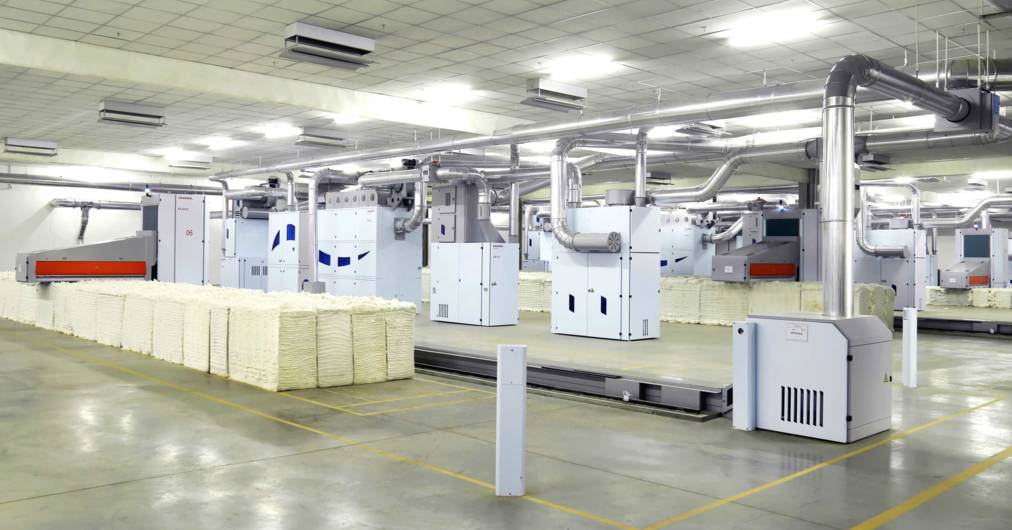What is Bale management?
Bale management refers to the testing, sorting & mixing bales according to properties of fibre for producing specific good quality yarn at minimum cost. In the context of the textile and spinning industry, bale management refers to the process of handling and organizing the raw cotton fibers that have been compressed and packaged into bales. Here’s a brief overview of bale management in spinning yarn:
- Receiving Bales: Raw cotton is harvested and then ginned to remove seeds and impurities. After ginning, the cotton fibers are pressed and packaged into bales for transportation and storage. These bales are often labeled with information about the cotton variety, grade, and origin.
- Quality Inspection: When bales arrive at a spinning mill, they undergo a thorough quality inspection. This involves checking for foreign matter, moisture content, fiber length, color, and other characteristics that can impact the quality of the yarn produced. Any substandard bales may be rejected or segregated.
- Storage and Inventory: Bale management includes storing the bales in a controlled environment to maintain their quality. Temperature and humidity levels are monitored to prevent damage to the cotton fibers. Spinning mills maintain an inventory of bales, carefully tracking each bale’s details.
- Blending: In many cases, cotton from different bales is blended together to create a uniform and consistent feedstock for the spinning process. Bale management involves selecting and combining bales with similar properties to achieve the desired yarn characteristics.
- Feeding the Opening Line: Once bales are selected and blended as needed, they are opened to loosen the fibers and make them suitable for further processing. This is typically done using machinery like bale pluckers or opening machines.
- Carding and Spinning: After opening, the cotton fibers go through carding and spinning processes to transform them into yarn. These processes align and twist the fibers to create the desired yarn characteristics, including count, strength, and quality.
- Record-Keeping: Bale management also involves maintaining records of each bale’s journey through the spinning mill. This includes tracking the bale’s source, quality, blending details, and processing parameters. These records are important for quality control and traceability.
Effective bale management is crucial for ensuring that the raw cotton fibers are processed efficiently and consistently to produce high-quality yarn. It involves careful handling, quality control measures, and proper documentation to maintain the integrity of the fibers throughout the spinning process.
The object of Bale management?
An evening out of the quality characteristics of a yarn. A means of avoiding quality jumps. A possibility of reducing costs. Bale management is a critical aspect of various industries, particularly in sectors such as textiles, recycling, and agriculture. Its primary objectives revolve around the efficient handling and organization of bales, which are compacted bundles of materials, to streamline processes and optimize resource utilization.
The first objective is to ensure the proper sorting and categorization of bales based on material type, quality, and specifications. This helps in maintaining product consistency and quality control. Second, bale management aims to minimize waste and loss during storage, transportation, and processing, thereby reducing operational costs and environmental impact. Additionally, it plays a vital role in inventory management, allowing for accurate tracking of available bales and optimizing supply chain logistics. Overall, the key objectives of bale management are to enhance efficiency, reduce waste, and ensure the seamless flow of materials in various industries, ultimately contributing to improved productivity and sustainability.
- To ensure evening out of the quality characteristics of a yarn.
- To avoid quality jumps.
- To reduce costs.
What is mixing and blending?
Mixing -If different grade of same fibres are kept together, then it is called mixing. e.g. 50% of 1.25” staple length of cotton + 50% of 1.125” staple length of cotton.
Blending -When different fibres of same or different grades are kept together and their composition is known and the yarn is reproducible then it is called blending.
Objects of blending:
- To achieve uniform quality.
- To improve processing performance.
- To reduce and control of production cost.
- To give the required characteristics to the end product.
Process parameters in the blow room?
- Number of opening machines,
- Type of beater,
- Type of beating,
- Beater speed,
- Setting between feed roller and beater,
- The production rate of the individual machine,
- The production rate of the entire line,
- The thickness of the feed web,
- The density of the feed web,
- Fibre micronaire,
- Size of the flocks in the feed,
- Type of clothing of the beater,
- Point density of clothing,
- Type of grid and grid settings,
- Airflow through the grid,
- Position of the machine in the sequence,
- Amount of trash in the material,
- Type of trash in the material,
- Temp and relative humidity in the blow room department.
Ring data?
Ring data is an additional attachment for data collection. It is one kind of software which collects data about the ring frame. It is also called production controlling system of the ring frame.
The data collected on:
👉Production data (OPS, GMS total data of previous 3 shift) 👉End breakage rate 👉Machine efficiency 👉Doffing time 👉No. of Doff 👉Machine downtime | 👉Yarn count 👉Yarn lot 👉No. of working spindle 👉Fibre type 👉TPI 👉Spindle speed |
Yarn spinning methods?
Different spinning methods have different types of influences on fibre properties. So output yarn properties vary according to the spinning methods as below-
| Order of importance | Ring | Rotor | Air-jet | Friction |
|---|---|---|---|---|
| 1 | Length and length uniformity | Strength | Fineness | Strength |
| 2 | Strength | Fineness | Cleanliness | Fineness |
| 3 | Fineness | Length and length Uniformity | Strength | Length and length uniformity |
| 4 | – | – | Length and length uniformity | Cleanliness |
Texpedi.com
Check out these related articles:









